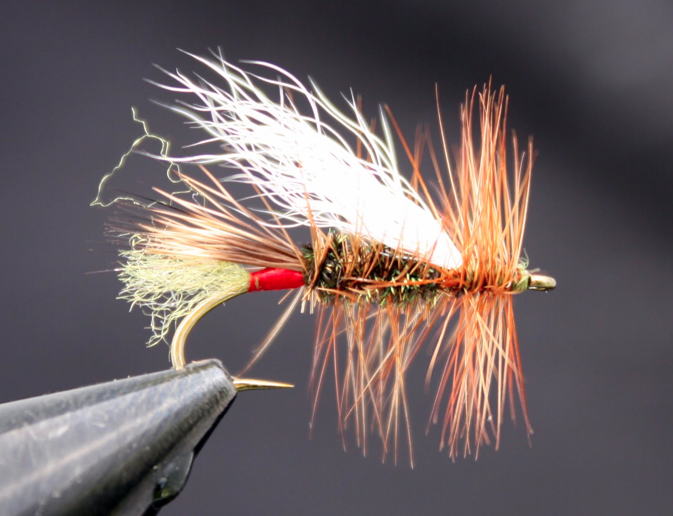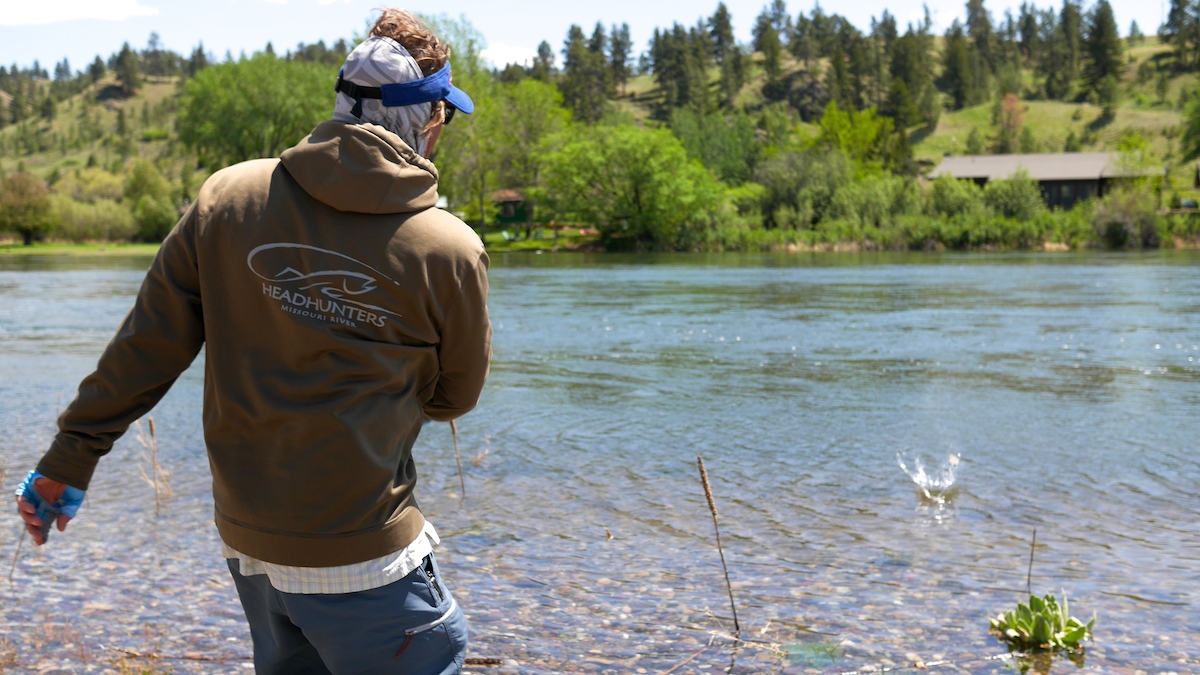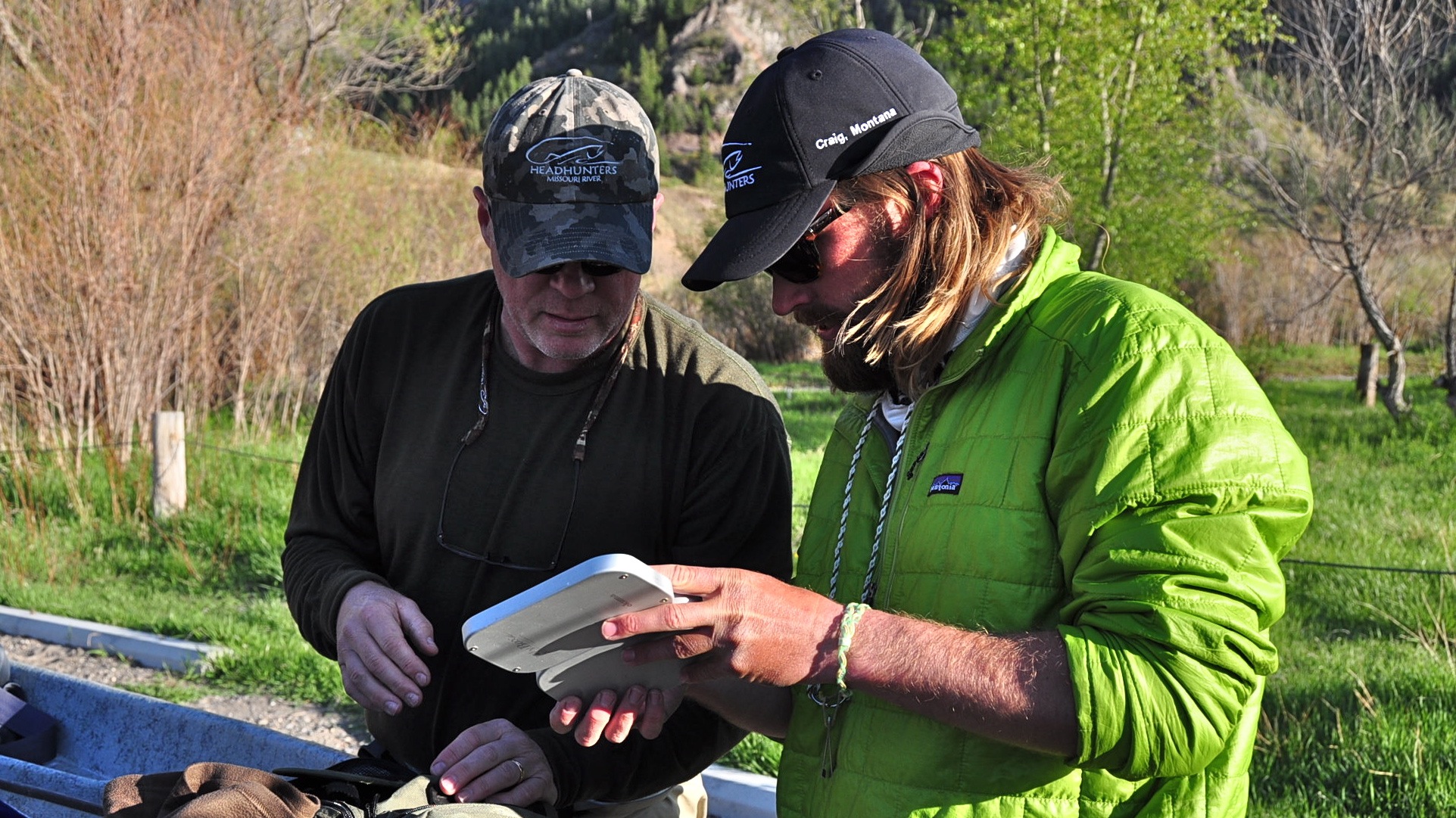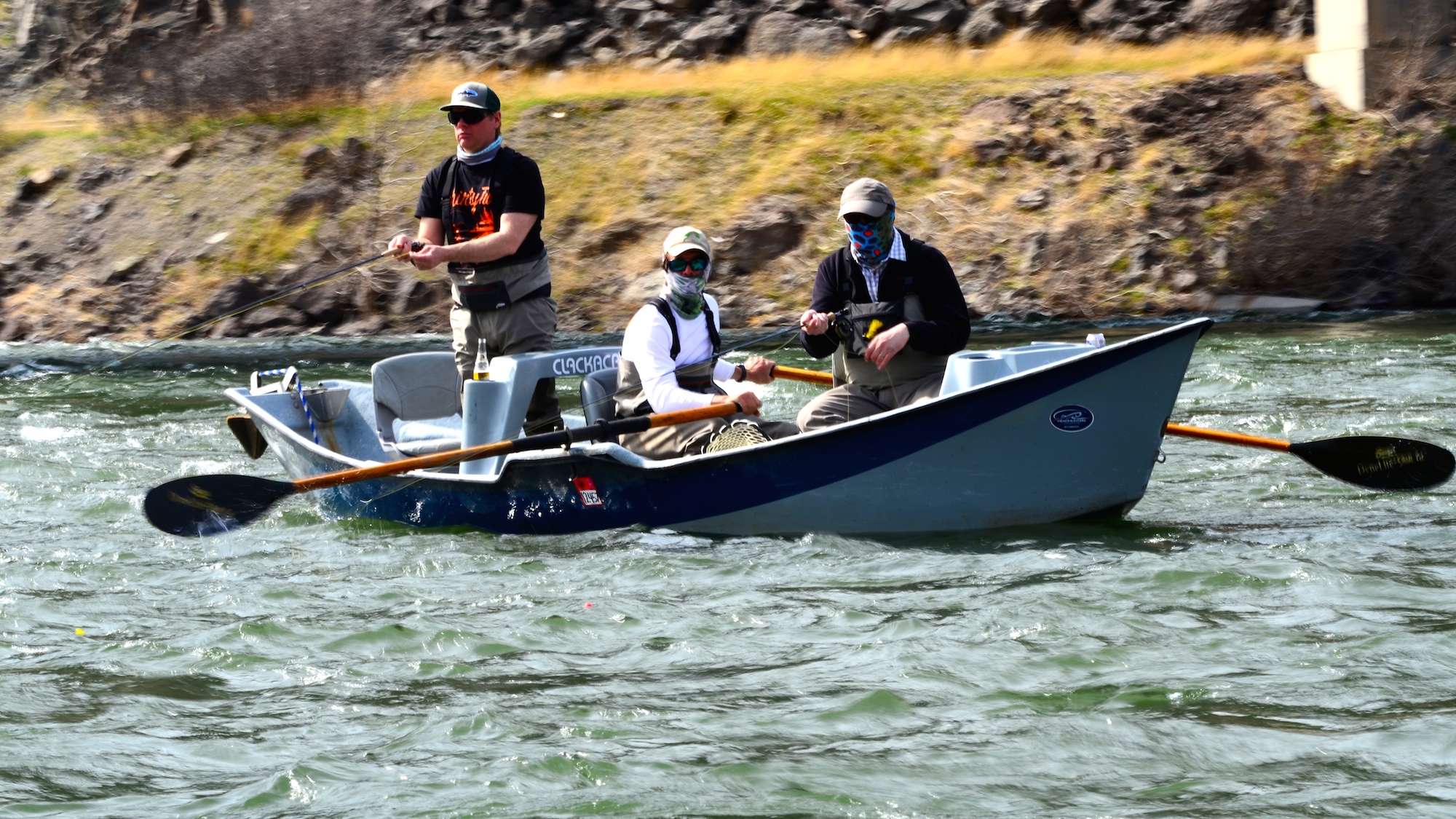New employee Braden Lewis, you’ll meet him this summer, sent us this mid-winter blog post.
Thanks Braden. We love LaFontaine wisdom too!
While the winter time on the Missouri River still offers solid fishing, I find myself taking more time during these shorter days to read about, think about, and participate in tying flies. I don’t know if it’s cabin fever, but at this time of year, I find myself drawn down into the mysterious undercurrent of the sport and begin to contemplate questions that, dare I say, verge on the theoretical. For instance, why have flies like the Royal Coachman or its more buoyant cousin the Royal Wulff been responsible for so many fish over the decades? These flies don’t imitate any particular hatch or insect. Lee Wulff, the originator of the Royal Wulff, described his invention simply as “strawberry shortcake.” Recently I’ve been rereading what I believe is the best explanation to the effectiveness of this, and many other, attractor flies.
The answer lies in The Dry Fly: New Angles by Gary LaFontaine. In this excellent book, he proposes a Theory of Color Attraction based on two suppositions.
“First, the ‘color’ of the surrounding light affects the intensity of a fly’s color. And second, flies with ‘intense colors’ attract trout (when trout are in the mood to be attracted).”
Let’s take a minute to think about these two statements a little more. We’ve all noticed that the “color” of the surrounding light changes. For instance, at sunrise or sunset, the light takes on an orange or reddish color. When fishing around bankside vegetation, the light takes on a greenish color. When fishing on overcast days, the light takes on a grayish color. Fly patterns that incorporate the same color as the surrounding light will absorb more light and therefore be more intensely colored in the eyes of the fish.
Now, let’s get back to the Royal Coachman/Wulff. This fly has a body or iridescent green peacock herl and a hot spot of red floss in it’s middle. As we all learned in elementary school, the visible spectrum of light (as seen in a rainbow) goes in the order ROY G. BIV: Red, Orange, Yellow, Green, Blue, Indigo, and Violet. Thus, a fly that incorporates the colors red and green spans the spectrum and has a pretty good chance of one color or the other matching the color of the ambient light. Fish a Royal Wulff around sunrise or sunset and the red hot spot will appear intensely to the fish. Fish a Royal Wulff over a weedy bottom or under streamside vegetation and the green peacock herl will appear more intensely.
So, what’s this mean for anglers on the Missouri River? This is a hatch-matching river, right? A Royal Wulff won’t work here will it? Well, check out this excerpt from Trout Flies: Proven Patterns, another book by Gary Lafontaine published in 1993 in which he describes a pattern of his creation called the Double Wing that is very similar to a Royal Trude:
Frank Obrist, guiding out of Great Falls, wrote, “From 12:00 noon to 4:00 p.m. the Royal Double Wing was the best fly on the Missouri River all summer. My clients racked up more big trout with it than they did even with streamers, fish up to 6 ½ pounds. I kept saying to myself, ‘Maybe it imitates this or maybe it imitates that.’ I couldn’t believe that a pure attractor would work on the Missouri, but finally I had to admit that it did.”
Will a royal attractor pattern work for you this summer? There’s only one way to find out. Stop by the shop to talk colors with our staff, or to discuss your own crazy theories about fly selection. It’s the season for cabin fever so we know you’ve got them. Or come to Wednesday fly tying night to see what the hell a Double Wing is. As the new season approaches, take some time this winter to have some fun and experiment with colors, because learning and experimentation is what makes fly fishing so much fun.
Ed Note: Thanks Braden. We like the article. See you soon standing in one of our favorite dry fly flats!





7 Comments.
Guess who invented the Buzzball too? Orange? That’s not going to work. Ha
Good post, but actually fly patterns that incorporate the surrounding light will REFLECT not absorb more light. An object that absorbs light is known as….black. Colour is due to reflectance, not absorption.
But your point is extremely relevant. In yellow light, objects with any other colour will appear black, because in yellow light the only light available to be reflected from an object is yellow. (Speaking of pure light conditions.) So in yellow light, a blue object would appear black, because the object only reflects blue light, and there isn’t any.
Great point you made — one needs to be conscious of prevailing light conditions to provide flies that actually retain their colour and don’t tend towards grey or black because of the mis-match between their colouring and the incoming light.
Mark, the buzzball is a great fly. George, you’re completely right. I should have said, “Fly patterns that incorporate the same color as the surrounding light will reflect more light and therefore be more intensely colored in the eyes of the fish.” It is the color of the light reflected, not absorbed, that makes things appear the color that they do. Thanks for the comments guys!
Interesting material indeed—and from new blood, no less. Looking forward to more Lewis—great stuff!
[…] of Attraction, chapter 10 in The Dry Fly, New Angles. I found this blog post that sums it up: Gary LaFontaine Wisdom… – Headhunters Fly Shop The bi-visible, with it's peacock body fits into the theory also. But again, in the same book, […]
Since you are a fan of Gary LaFontaine and have read his book on dry flies, have you tried the pheasant tail dry fly? I read the recipe in the book and am puzzled on how to tie it and fish it effectively. Do you have any suggestions? Do you have any sketches or websites to show how it is tied?
Tie it how you tie any parachute pattern Marty. This might help. https://www.youtube.com/watch?v=yNuUPQGXwCo